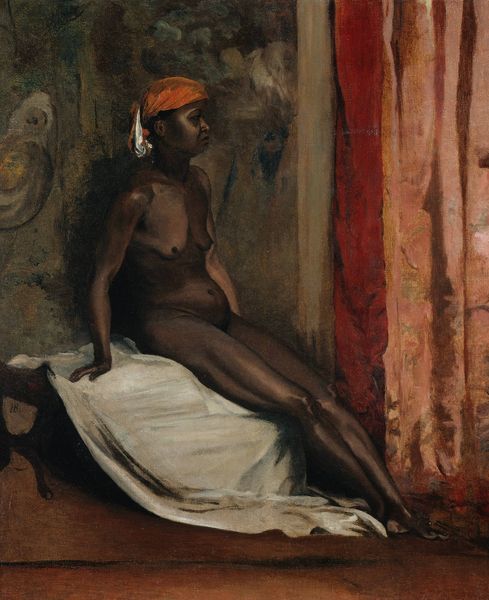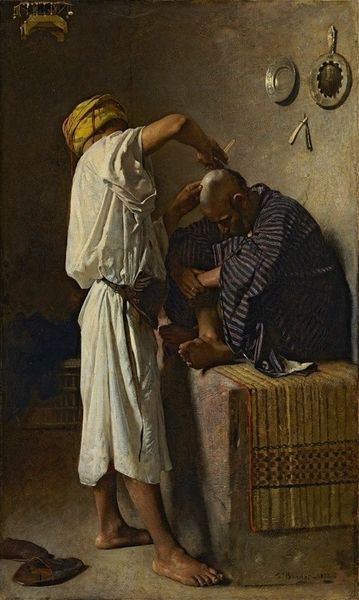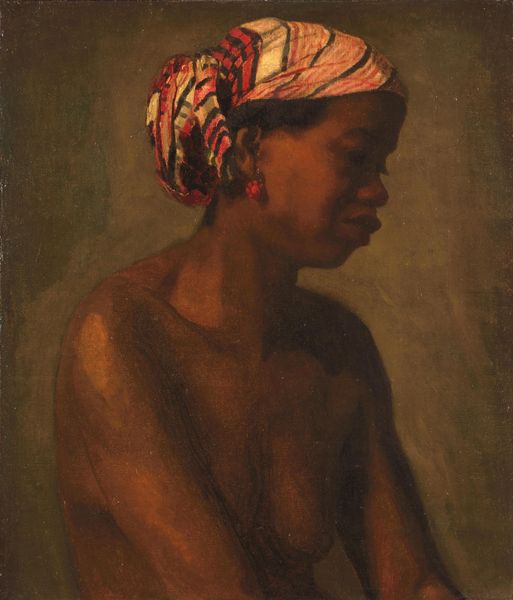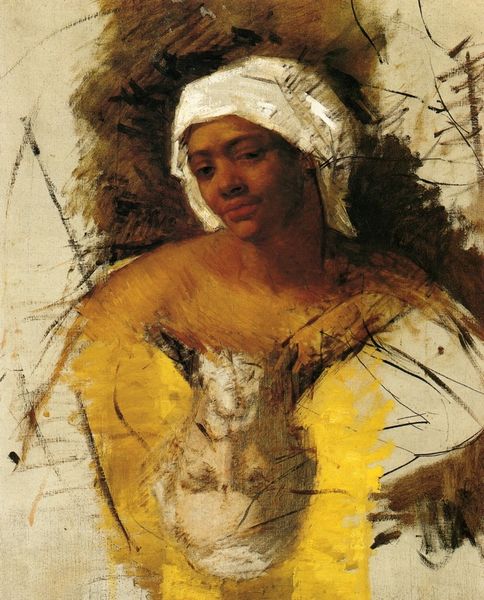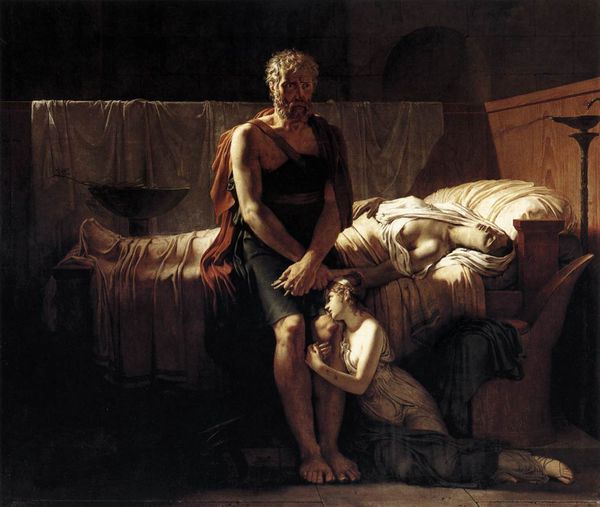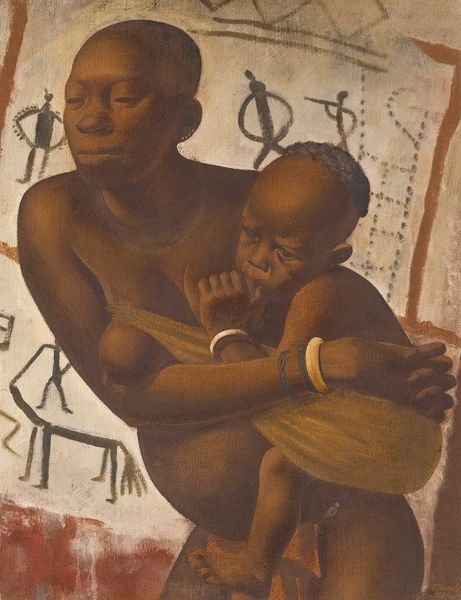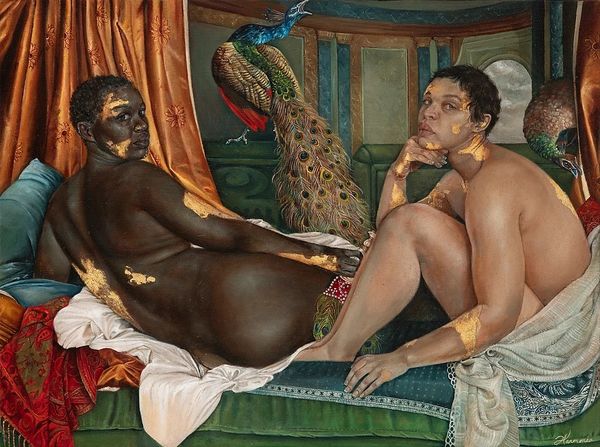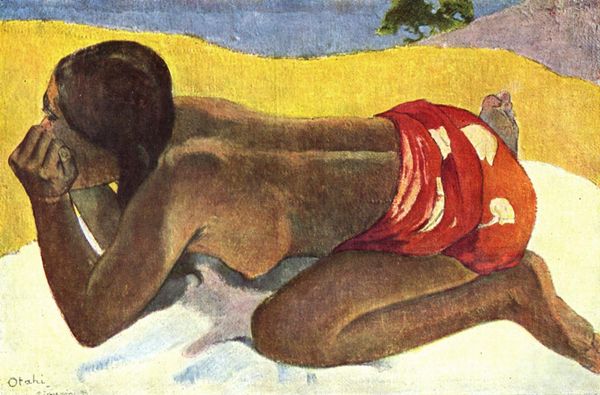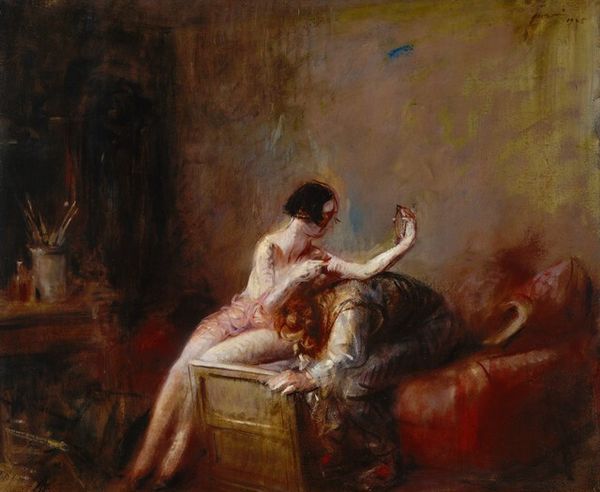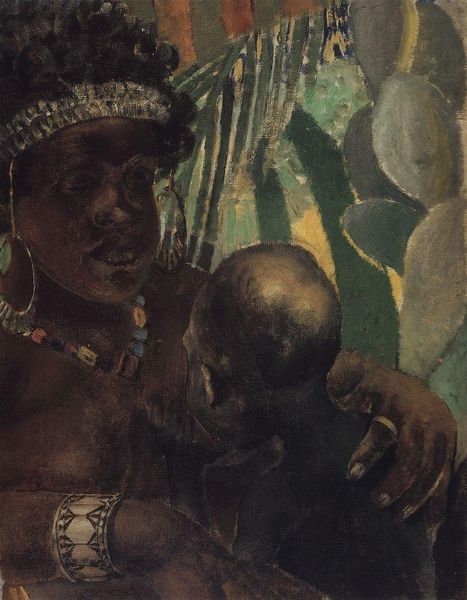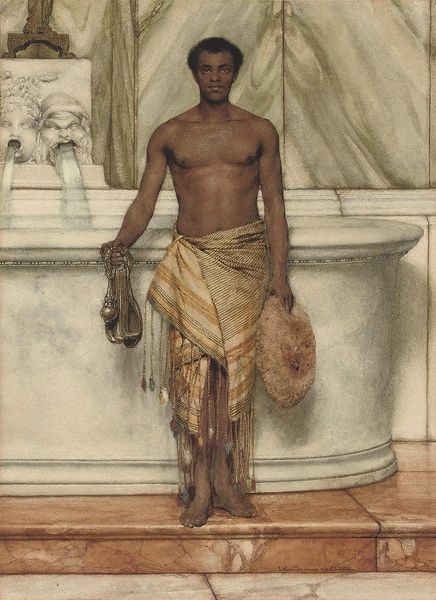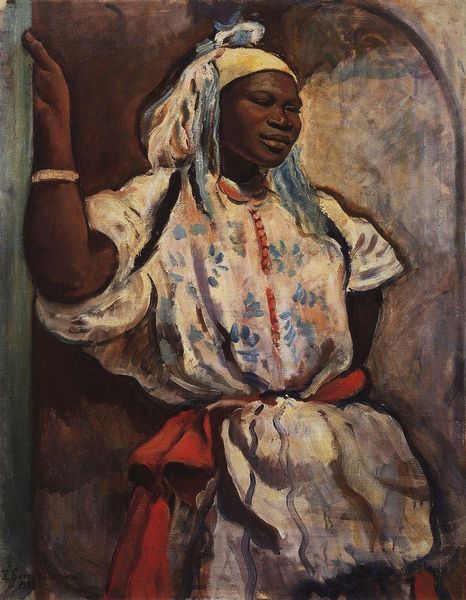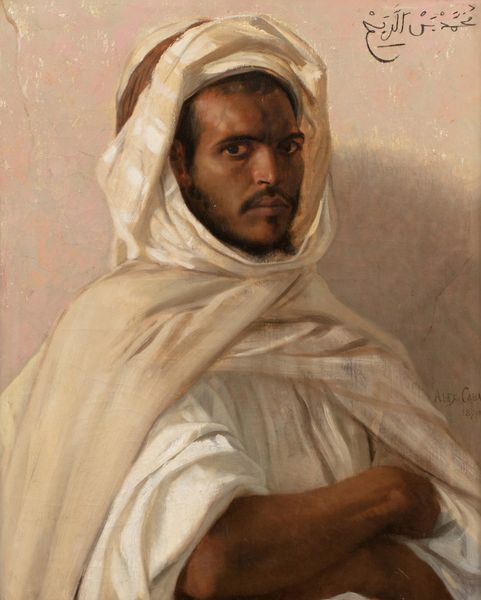
painting, oil-paint
#
portrait
#
painting
#
oil-paint
#
oil painting
#
orientalism
#
genre-painting
#
academic-art
#
realism
Copyright: Public domain
Léon Bonnat painted this image of ‘The Negro barber in Suez’ sometime in the late nineteenth century. It presents an intimate scene of labor, likely observed during Bonnat’s travels in Egypt. What does it mean that Bonnat, a celebrated French portraitist, turned his eye to this scene? Consider the broader context: France was consolidating its colonial power in North Africa, and the opening of the Suez Canal in 1869 transformed global trade and travel. This painting offered European audiences a glimpse into the exotic “Orient,” but it also reinforces a racial hierarchy. The barber, strong but anonymous, is reduced to his profession. The sitter, passively receiving the shave, embodies a certain quiet dignity, yet remains subject to the Western gaze. To truly understand this image, we need to research Bonnat's travels, French colonial attitudes, and the lives of the people living and working in the newly globalized port city of Suez. Only then can we fully grasp the complex social dynamics at play in this seemingly simple scene.
Comments
No comments
Be the first to comment and join the conversation on the ultimate creative platform.
